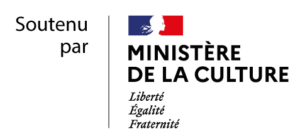
Location
Chicago, USA
Ambient and Atmospheric Geographies at AAG 2015 in Chicago
These three themed session on ambiences and atmospheres will take place within a larger conference in Geography:
Call for Papers
Recent research in human geography has shown sensitivity towards the sensory experience of space. In particular, and in concert with developments around affect, new materialisms, and non-representational theories, attention has been drawn towards the ephemeral and transient atmospheres and ambiances that press upon, and give consistency to, the unfolding of social life. Such ambiances and atmospheres find expression in the talking place of social life itself – from the actions and interactions of bodies, technologies, images, objects, architectures, discourses, and so on – and in turn play a part in the ordering of this taking place. This has been theorized in terms of attunement, captivation, elevation, manipulation, the circumstantial, mood, air, weather, amongst others. Individual and collective moods have been shown to be the target of political intervention (Anderson 2014); technological interfaces have been shown to envelop, captivate, and so retain the attentions of their users (Ash 2012); the functioning of the economy has been shown to be inherently tied to perturbations in collective feelings (McCormack 2013); and felt atmospheres and ambiances have been shown to provide conditions, or a lack there of, for the unfolding of vibrant (or stultified) forms of sociality and public life (Edensor 2014; Adey et al 2013).
While such work is often associated with a particular form of UK-based cultural geography, such geographic delimitations belie a more complex international and interdisciplinary picture of research interested in our emersion in such sensory environments. Anglophone cultural geography has not been along in exploring such collective affectivities and sensibilities. Rather, the sensory in this sense has been explored in Francophone urban and architectural studies and, notably, sensory phenomena, studied in close relationship to social interaction and spatial context, have been researched in pursuit of various theories of ‘ambiance(s)’ (Augoyard 1995, Thibaud, 2002). Such theories have helped in the construction of transdisciplinary methodologies for the sensory understanding of lived spaces, thinking the lived experience of space beyond its visuality and beyond synchrony. Thinking in terms of ambiance, this work has offered insights into to how we perceive and act in lived space and, based on this, how we could improve these space’s qualities by focusing on their sensory, atmospheric dimensions.
Despite the aforementioned developments, a range of issues relating to the sensory geographies of ambiances and atmospheres require further exploration. In particular, issues of how to research and represent ambiances and atmospheres stand out here. This session, organized under the aegis of the International Ambiances Network (ambiances.net), will explore some of the conceptual starting points for such issues and suggest means of proceeding from them.
Organizers of the sessions
- Rainer Kazig (Researcher at Cresson, CNRS, France)
- Damien Masson (Université de Cergy-Pontoise, MRTE, Cresson, France)
- Paul Simpson (Plymouth University, UK)
Tuesday 21 April 2015
Venue: Gold Coast, Hyatt, West Tower, Bronze Level
Session #1 – Ambient and Atmospheric Geographies: Conceiving
-
Rainer Kazig, Damien Masson, Paul Simpson, Introducing Ambient and Atmospheric Geographies
- James N. Ash, Atmospheric Methods
- Niels Albertsen, A(n)tmospheric gestures
- Justin Spinney, Toward an aesthetics of cycle design: Using bio-sensing to apprehend and represent visual and sensory experience of older cyclists
- Collective discussion
Session #2
– Ambient and Atmospheric Geographies: Researching
From 10.00am to 11.40am
-
Jeanne Lafon, A typology of soundscapes as a means to describe the sonic experience of the users in urban parks and gardens
-
Katja Manz, « You see something that I can not see » A methodical experiment and possibilities of audio-visual analysis
-
Clémence Lehec, Walkscaping the border: an experimental geography attempt
-
Laure Brayer, The Role of Intermediate Objects in the Collective Understanding of Ambiance
-
Frédéric Pousin, Nicolas Tixier, D-TRANSECT Crossing the Waste Lands of the Huveaune Valley: Plant Spread, Vernacular Practices, Landscape Mediations
Session #3 – Ambient and Atmospheric Geographies: Representing
From 12.40am to 2.20pm
-
Yasmine Abbas, Generative Mapping
-
Thomas Leduc, Vincent Tourre, Formalised anticipation maps of the understanding of spaces
-
Antonella Tufano, Objet-milieu : ChartaeGraphiae and the Sensors. Towards a sensitive presentation of the spaces.
-
Anne Petit, Architecture, Colour and Urban Planning Strategies: representing the effects of colour on urban space
-
Casper Laing Ebbensgaard, Representing light, sensation and the everyday in Newham, East London



